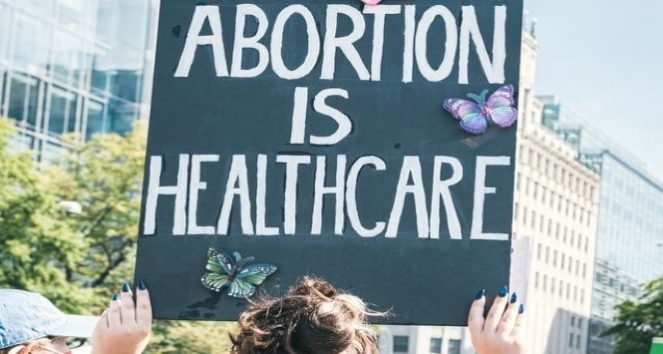Happy 49th, Roe v. Wade

January 20, 2022
For almost half a century, those living in the U.S. have had the right to choose abortion as an option. We have Roe v. Wade, which turns 49 on January 22, to thank for this.
With the 1973 Roe v. Wade decision, the Supreme Court recognized that the choice between carrying out a pregnancy or having an abortion belonged to the individual, affirming that access to safe and legal abortions is a right protected by the U.S. Constitution.
Today, Roe v. Wade is at its most vulnerable after being under attack for years. Most recently, Texas passed a law that bans abortions after six weeks of pregnancy.
But did you know that at six weeks, many people don’t even realize they’re pregnant?
Barriers to Abortion
Say you’ve just missed your period. You visit the doctor, who informs you that you’re already more than four weeks pregnant, as pregnancy is calculated from the first day of your last period. And now, depending on where you live, you may have less than two weeks to find somewhere to get an abortion.
First, you may have to face a host of barriers. Some states impose waiting periods on abortion procedures—48 hours in Tennessee, for example. In this case, making two clinic trips could be out of the question due to a variety of factors, including cost, distance and accessibility.
The waning number of clinics in some states can further complicate things; as of June of 2019, there were six American states with only one abortion clinic left.
Besides the geographical challenge, many people can’t afford an abortion. The 1976 Hyde Amendment bans federal funding for abortion services in most pregnancies. This means that those who rely more heavily on federal funding like Medicaid—disproportionately low-income individuals and people of color—may have a difficult time accessing safe, legal abortions.
Legal Abortions Are Safe Abortions
What would happen if Roe v. Wade was overturned? Many states already have their own “trigger bans” in place—laws designed to take effect immediately after Roe is reversed. Even if Roe v. Wade is weakened, 26 states are poised to ban abortion or at least institute a timed ban similar to the six-week ban in Texas, according to the Guttmacher Institute.
Individuals then seeking an abortion in these states are more at risk. For instance, 4.7 to 13.2% of pregnancy-related deaths around the world annually can be attributed to unsafe abortions, according to research from the World Health Organization.
However, legal abortion remains one of the safest medical procedures in the U.S.
For those with more connections and funds, abortion may still be a possibility, but this is not the case for people who lack enough money, privilege and access. Without the option of a legal abortion, people will turn to illegal and dangerous methods.
Choice Is in Danger
With Roe v. Wade in more danger than ever before, an essential step forward is education—learning about your rights and the laws that are designed to protect you, your health and your ability to make a choice for your life and situation.
Here’s hoping that Roe v. Wade will survive to see its 50th birthday—as a continuing symbol of reproductive justice and bodily autonomy in the U.S.
Photo by Gayatri Malhotra on Unsplash

